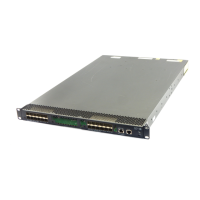83
Managing the file system
This chapter describes how to manage the device's file system, including the storage media, directories,
and files.
IMPORTANT:
• Before managing storage media, files, and directories, make sure you know the possible impacts.
• A file or directory whose name starts with a period (.) is considered a hidden file or directory. Do not
give a common file or directory a name that starts with a period.
• Some system files and directories are hidden.
Storage medium naming rules
The device supports the following types of storage media: flash memory, and USB disk. These storage
media are named according to the following rules:
• If a storage medium is the only storage medium of its type on the device, it is named by its type. For
example, if the device has only one flash memory, the name of the flash memory is flash.
• If a storage medium is partitioned, the name of a partition is composed of the physical device name
and the partition number. The sequence numbers of partitions are numbers such as 0, 1, and 2. For
a device with only one USB disk, for example, the names of the first and second partitions of the
USB disk are usb0 and usb1, respectively.
File name formats
IMPORTANT:
Storage medium names and the chassis and slot strings are case sensitive and must be entered in lower
case. The system will display a message that the file or directory does not exist if you enter a stora
e name,
the chassis string, or the slot string in upper case.
When you specify a file, enter the file name in one of the formats shown in Table 11. When you specify
a directory, follow the rules for the drive and path arguments.
Table 11 File name formats
Format Descri
tion
Exam
le
file-name
Specifies a file in the current working
directory.
a.cfg indicates a file named a.cfg in the
current working directory.

